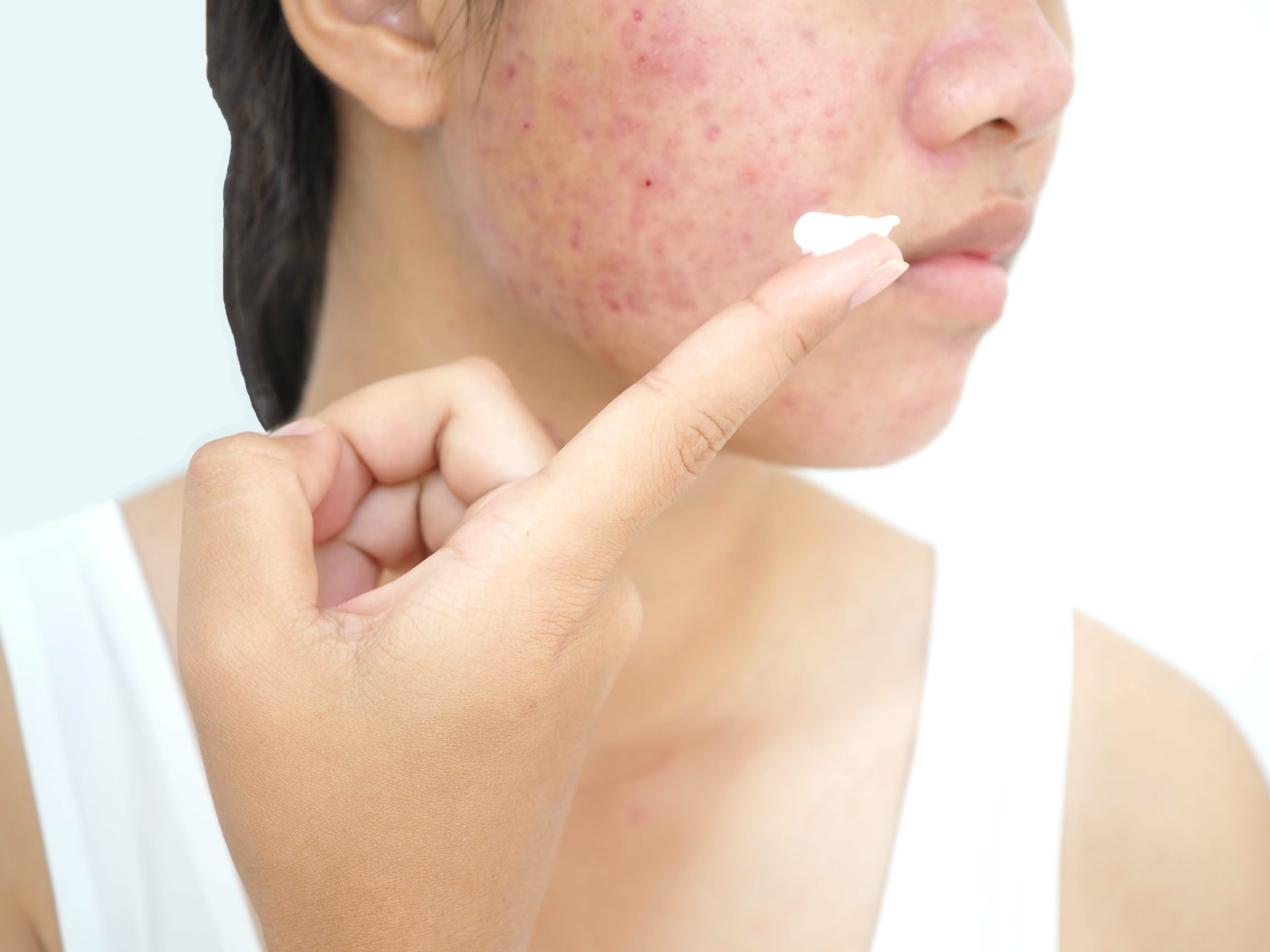- Case-Based Roundtable
- General Dermatology
- Eczema
- Chronic Hand Eczema
- Alopecia
- Aesthetics
- Vitiligo
- COVID-19
- Actinic Keratosis
- Precision Medicine and Biologics
- Rare Disease
- Wound Care
- Rosacea
- Psoriasis
- Psoriatic Arthritis
- Atopic Dermatitis
- Melasma
- NP and PA
- Skin Cancer
- Hidradenitis Suppurativa
- Drug Watch
- Pigmentary Disorders
- Acne
- Pediatric Dermatology
- Practice Management
- Prurigo Nodularis
- Buy-and-Bill
News
Article
Combination Therapy of LED Light and Chromophore Gel Successfully Treats Acne
Author(s):
Key Takeaways
- LED light therapy combined with chromophore gel significantly improved acne, reducing erythema and inflammatory lesions after six sessions.
- The study involved 15 patients with moderate to severe acne, previously treated with topical and oral therapies.
Patients saw improvement in hydration, sebum, erythema, and scarring after just 3 treatment sessions.
Image Credit: © dikushin - stock.adobe.com

Combining LED light therapy with photoreceptor chromophore gel created a synergistic and successful treatment for acne.1 The multidirectional therapy improved the skin’s hydration, sebum, erythema, and scarring. These results were seen after just 3 treatments with the best effects observed after 6 sessions.
The preliminary study featured 15 patients (13 women and 2 men) between the ages of 20 and 24 with moderate or severe papulopustular acne lesions for at least 3 years. More specifically, they had either a 3 or 4 on the Investigator’s Global Assessment (IGA) scale.
All had previously used topical treatments such as retinoids, clindamycin, and benzoyl peroxide, along with oral therapies like isotretinoin and tetracyclines. Eligible patients had not used oral antibiotics for at least 12 weeks and topical antibiotics for at least 4 weeks.
Each patient underwent 6 weekly LED treatments of blue light (465 nm), pulsed red light (640 nm), and near-infrared light (880 nm). The low dosage of blue light in particular can emphasize its anti-inflammatory and antimicrobial effects while the red and near-infrared light accelerates collagen production and the regenerative process for improved skin texture and appearance.2
A chromophore preparation containing fluocin A was applied to the patient’s skin before the energy treatment, which lasted about 20 minutes. Antera 3D images and biomechanical measurements of skin erythema, hydration, and lubrication were taken at baseline, before the fourth treatment, and 6 weeks after the last session.
The intensity of erythema on the left and right cheeks decreased significantly (p<0.001). This change was first seen after 3 treatments with even more reduction 6 weeks post-treatment (p<0.05). The left cheek had a median erythema score of 77 at baseline while the right cheek had a median score of 62. By the end of the trial, this decreased to 32 and 36, respectively. The number of inflammatory lesions was also reduced on both cheeks (p<0.001). The median score on the left cheek started at 11 and decreased to 2, while the right cheek had a score of 10 which improved to 2.
According to the IGA scale, the severity of acne decreased significantly post-treatment, when compared to baseline and measurements at week 3 (p<0.001). The median IGA improved from a 3 to a 1 with 93% of patients experiencing a 2-unit change. Most participants ended the study with an acne level of 1 or 2 on the IGA scale. Atrophic scars also saw statistically significant volume improvement on both cheeks after 3 treatments (p< 0.05) and 6 weeks after 6 treatments (p<0.05). On the left, the median scare volume decreased from 1.15 to 0.53 and on the right, it was reduced from 1.13 to 0.63.
Stratum corneum hydration (SCH) changed across the forehead, chin, and cheeks with overall hydration increasing 6 weeks post-treatment (p<0.001). Depending on the area, median hydration improved from a range between 45.2 and 54.2 to a range between 54.3 and 70.4.
The amount of sebum in all areas of the face also changed significantly 6 weeks post-treatment. Depending on the region, median surface sebum improved from a range between 100 and 175 to a range between 67 and 110. More specifically, the forehead and chin saw reductions as early as after 3 treatments.
According to investigators, it is also noted that utilizing this therapy with other methods like microneedling or fractional lasers may also create successful outcomes, particularly with the regulation of scarring and sebum secretion.
“The combination of these methods can increase the effectiveness of treatment by enhancing regenerative processes and stimulating collagen production,” the authors wrote. “The best results are usually achieved with a combination of different treatment methods, adapted to the skin condition.”
Further studies with larger sample sizes and a focus on non-inflammatory lesions can explore long-term effectiveness and safety, depending on the dosage and proportions of each type of radiation.
References
1. Deda AE, Hartman-Petrycka M, Wilczyński S. Evaluation of the Effectiveness of Using LED Light Combined With Chromophore Gel in Treating Acne Vulgaris - Preliminary Study. Clin Cosmet Investig Dermatol. 2025;18:207-221. Published 2025 Jan 22. doi:10.2147/CCID.S501140
2. Zhang D, Leong ASW, McMullin G. Blue light therapy in the management of chronic wounds: a narrative review of its physiological basis and clinical evidence. Wounds. 2023;35(5):91-98. doi:10.25270/wnds/22097





